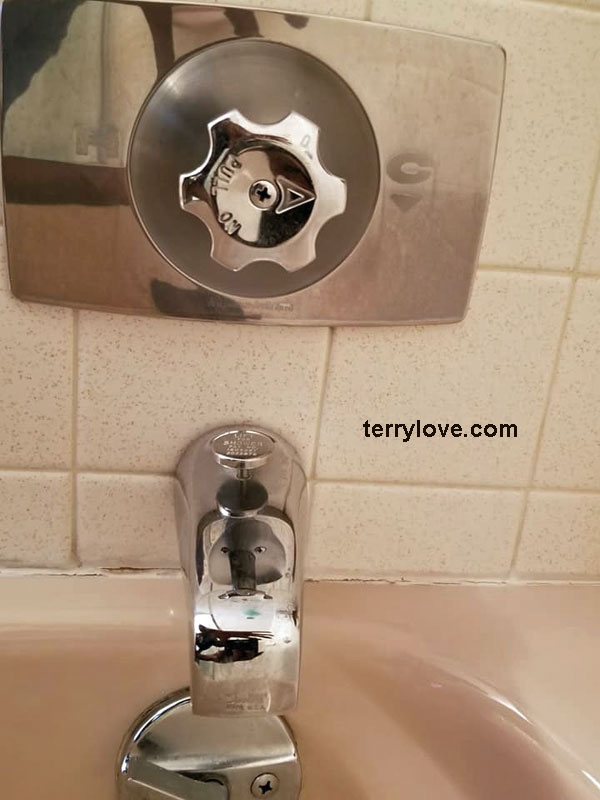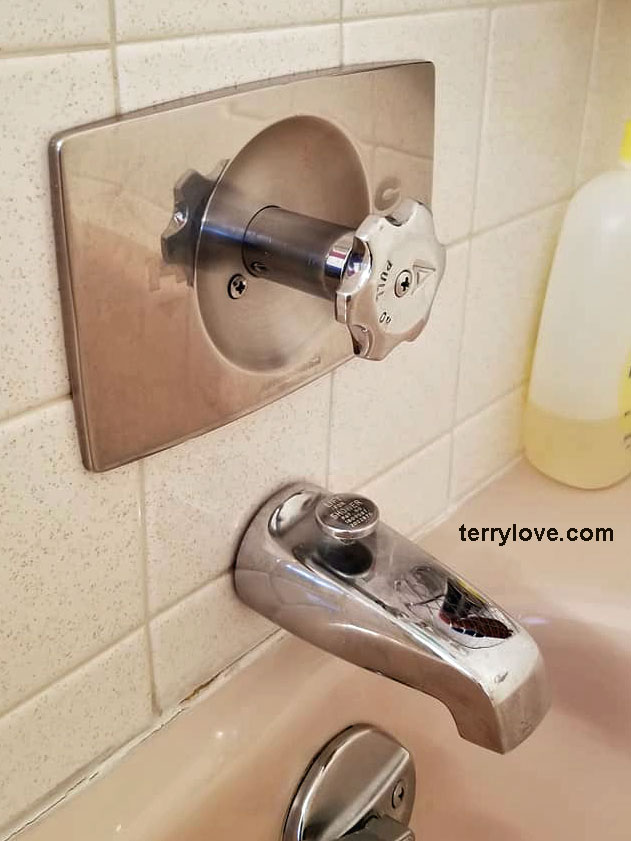Hi Kids, it's professor thermal expansion, (linearly) here to give you some more hints...
So, after about one week of functioning valves, I succumbed to the dreaded no hot water issue.... This time I put my physics minor to use and thought long and hard. Actually, mostly, dropping F-bombs under my breath while crouching in the tub having taken apart this valve for like the 10th time now. I sat on my office chair, toilet, and thought things through really, really, hard. As I sat on the throne, I started to compare my new replacement kit parts against my formerly rebuilt, long ago by the previous owner, valve and its parts. Then I noticed something insignificantly major, the springs....I looked at the old spring that worked flawlessly, likely for decades, and compared it against my new springs. The new springs were 1/8"-1/4" shorter than the old springs. Then I thought about this some more and about thermal expansion.... a spring will expand linearly along its coil/twist/length.
So what professor, why does that matter?
Ah grasshopper.... so, if you have the original springs you'll see how narrow they are...this was to allow them to be "tippy" and also to fit inside the debris basket within each valve chamber. Someone long ago decided that a conical spring was the solution for replacement parts and got rid of that pesky debris basket...maybe they contributed to noise??? Back to the point...
So the new kit springs are conical in shape making them "more" stable vs the original narrow springs... think pyramid shape grasshopper...now imagine you have a taller pyramid and a shorter pyramid, but both have the same base size- Q: Which one is more "tippy" if the base size of the pyramid stays the same but the height is changed? A: The taller one becomes more prone to being tipped over easily....
So, the issue is two fold, all these new kits use shorter springs, and thermal expansion causes these springs to further "grow" in length adding more tension within that valve chamber and it makes them even less "tippy" thus not allowing the stems to pivot open "fully" and results in a trickle of water. If you crank only the hot water you will observe the water stream will go from full flow, to a lower flow, to the eventual trickle or even no flow situation.
OK professor, thanks for that explanation, but what the "F" do I do now?!
So, the solution is to look at your new springs. You will see that last two wide layers of spring are most likely sandwiched together and touching. You must separate that sandwiched layer on the widest part of the cone of the spring. This means you will need to stretch out that last layer so there is a gap that mirrors all the other layers and their gap thus making the spring sit about 1/8" taller than how it came from the factory. This will make the "base" of that cone which sits at the top of the valve and touches the valve caps more tippy. The springs sit "upsidedown" when installed. The narrow part of the spring fits over the little nipple on the stem and the wide part of the spring touches the cap of the valve body.
Now, time will tell if my minor in physics, my analysis of this issue, and the spring extension solution turns out to yield another decade of flawless use of these shower valves. PLEASE PLUMBING GODS, PLEASE! Good grief Charlie brown...these old faucets have a cute, and simple, design; but, rely heavily on proper clearances of that dumb cone spring to work right in both preventing a leak at the seats and to assure they tip open properly.
If all else fails, or your parts have excessive wear and tear and you don't want to continue this madness, I have a solution for you. While searching around google it led me to
another post on this forum that discussed a company:
M-One Specialties, Inc.
http://www.moneplumbing.com/repair.asp
974 West 100 South
Salt Lake City, UT 84104
Phone: (801) 596-2500
Toll Free: (800) 525-9223
The former owner, he passed away and now his employees run it, of M-One developed a drop in valve body that fits directly onto the old back manifold that's in your wall. This means it's plug and play ready and all you have to do is loosen the brass bolts on each side of that valve body, unscrew the old guide post, and drop in the new replacement valve body. Long and short, there is a new version 2.0 of this design, under the new ownership of M-one , that just came out and is not shown on their site, but it IS available and it's using a design which makes it ADA compliant while still using the old rear manifold! The new valve body, PN 9442, is about $120 + S&H. It's using a readily available Chinese, "knock-off," valve which is used on 20+ commercially available faucets today...so part availability should not be an issue moving forward! It operates by twisting it "on" from cold to hot and it's a pressure balanced valve to assure scalding protection. It's got an offset handle so it will be different in appearance from the original round or T-handle you have. The kit will include all the parts you need including a new trim kit front so it all matches nicely. Give M-one a call and hopefully move on from this dinosaur with many years of trouble free use while keeping the old guts! (Though your pipes might be an issue too, especially if using old galvanized steel)
Hope I helped you out! And, no, I'm no plumber... just handy and stubborn to see it through to the end...




